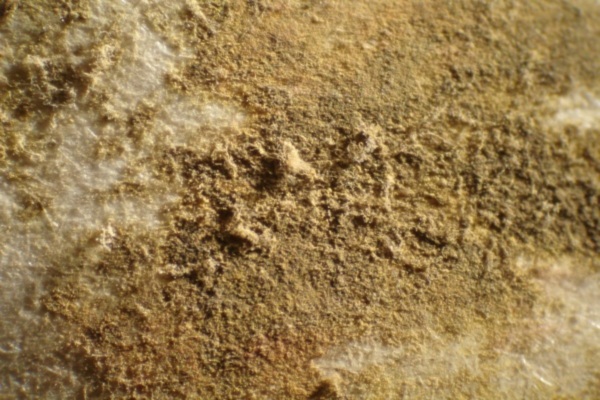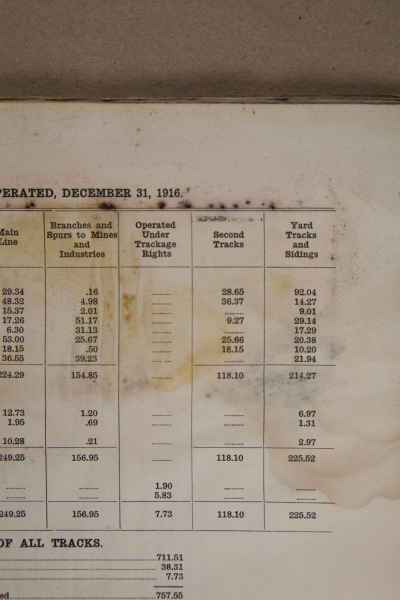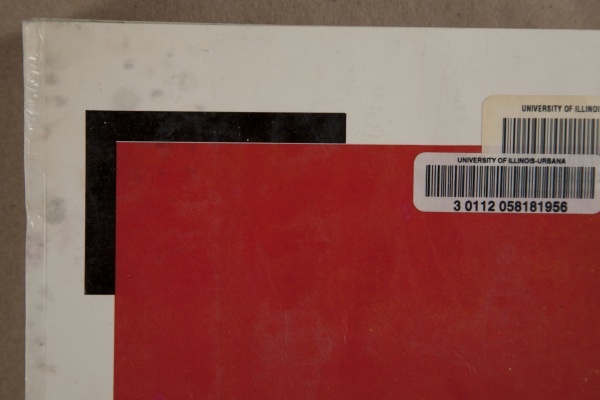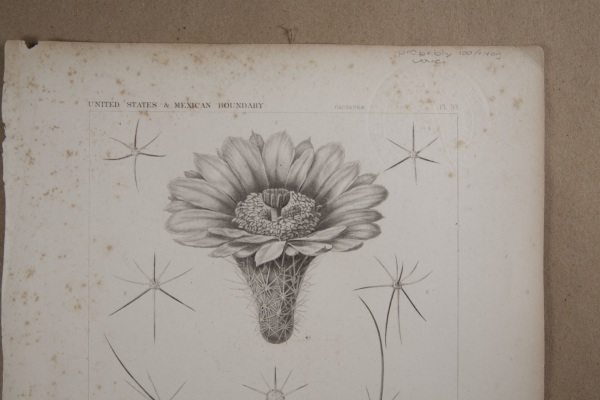Sending materials to Preservation Services
- Suspected mold or pests: Please place item inside sealed plastic bag, include a BLUE Mold and Pests streamer, and route to Preservation Services.
- Wet or damp book: Please place item inside a sealed plastic bag, include a PINK Rush Request streamer, and route to Preservation Services.
Water response
- How to Respond to a Water Leak in the Library (pdf)
- UIUC Library Emergency Planning and Disaster Response Wiki (staff login required)
Additional mold information
The following provides information to help discern if an item has been infested with mold.
Mold is a type of fungus which is a simple-celled microorganism that feeds on living organisms as well as dead organic materials, such as those found in libraries. According to the National Park Service there are around 1.5 million mold species.
The predominant cause of mold is excess water. Excess water can come from liquid water, as a result of leaks, or water vapor, as a result of high relative humidity due to improper storage, faulty humidifiers, or HVAC malfunctions. While most research shows that fungal growth is most prevalent in conditions in which relative humidity is above 60%, humidity levels below this threshold alone will not prevent mold growth, given the fact that favorable germination environments vary from species to species, and therefore libraries should always be on the lookout for mold growth in their collections.
Mold can have detrimental effects on materials ranging from discoloration and deterioration to further spread of infestation. Even a small mold growth can turn into a large infestation of not properly dealt with in a timely fashion.
Molds come in various colors and sizes, but most molds encountered in a library environment have a characteristic musty odor and active mold has distinct three-dimensional texture and fuzzy appearance. One can differentiate mold from dirt or foxing by these characteristics. Always err on the side of caution and bring questionable materials to Preservation for further review.
If you notice mold growth, quarantine the material in a bag and bring the item to Preservation in Room 425 of the Main Library. We will assess the item for appropriate treatment, in most cases this means vacuuming the item or irradiation to eradicate the spores. Be sure minimize contact with the mold, as contact may cause further spread of the infestation. Wash any exposed skin that has come into contact with the moldy material and examine the area the item was located for any other moldy items. If there is evidence of an outbreak please inform Preservation staff.
The best method of mold prevention is a robust environmental monitoring program in tandem with regular cleaning of shelving stacks to ensure proper conditions for collections. The National Park Service recommends that RH levels should always be kept below 65%. If RH exceeds this level please contact Preservation for a portable dehumidifier and further assistance.
The best method of mold prevention is a robust environmental monitoring program in tandem with regular cleaning of shelving stacks to ensure proper conditions for collections. The National Park Service recommends that RH levels should always be kept below 65%. If RH exceeds this level please contact Preservation for a portable dehumidifier and further assistance.





Further Reading
-
Florian, M. E. (2004). Fungal facts: Solving fungal problems in heritage collections. London, UK: Archetype Publications.
-
—-. (1997). Heritage eaters: Insects & fungi in heritage collections. London, UK: James & James.
-
National Park Service. (2007, August). Mold: Prevention Of Growth In Museum Collections. Conserve O Gram. Retrieved December 12, 2012, from http://www.nps.gov/museum/publications/conserveogram/03-04.pdf
-
Northeast Document Conservation Center (2007). 3.8 Emergency Salvage of Moldy Books and Paper. Preservation Leaflets. Retrieved January 14, 2021, from https://www.nedcc.org/free-resources/preservation-leaflets/3.-emergency-management/3.8-emergency-salvage-of-moldy-books-and-paper